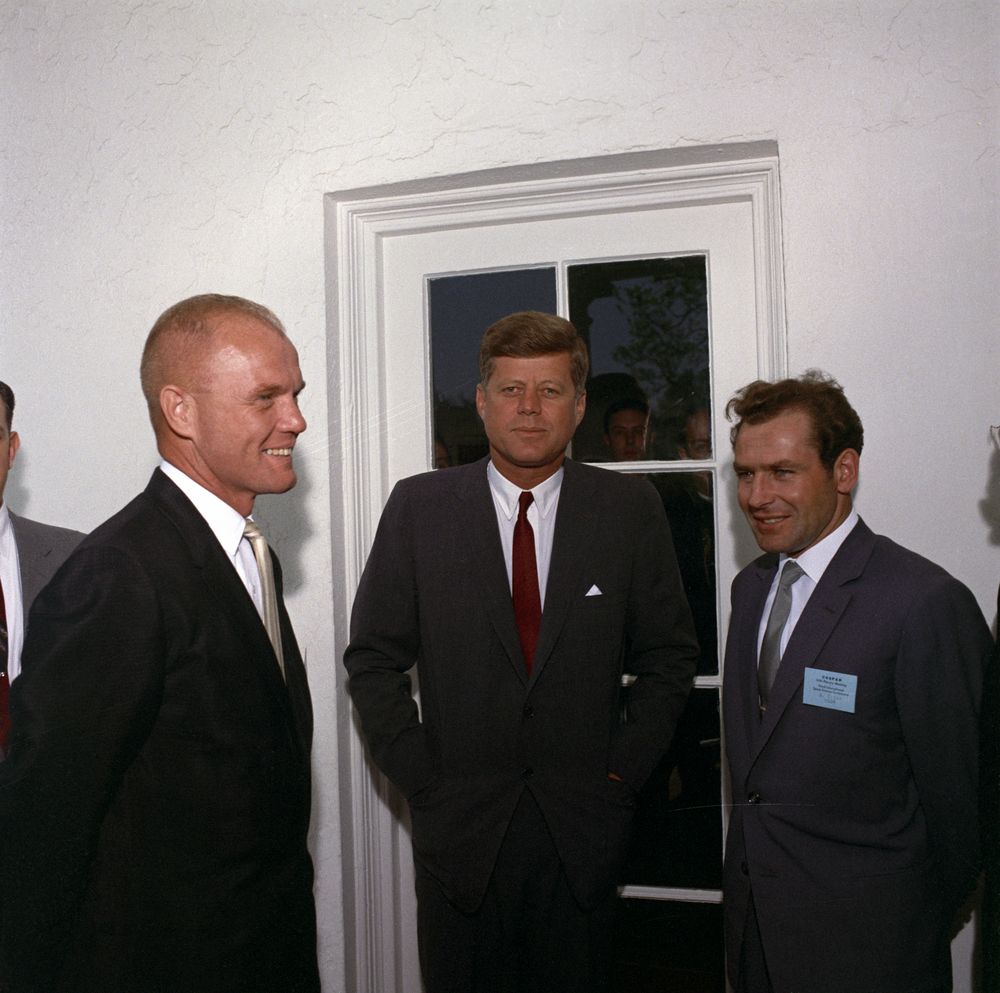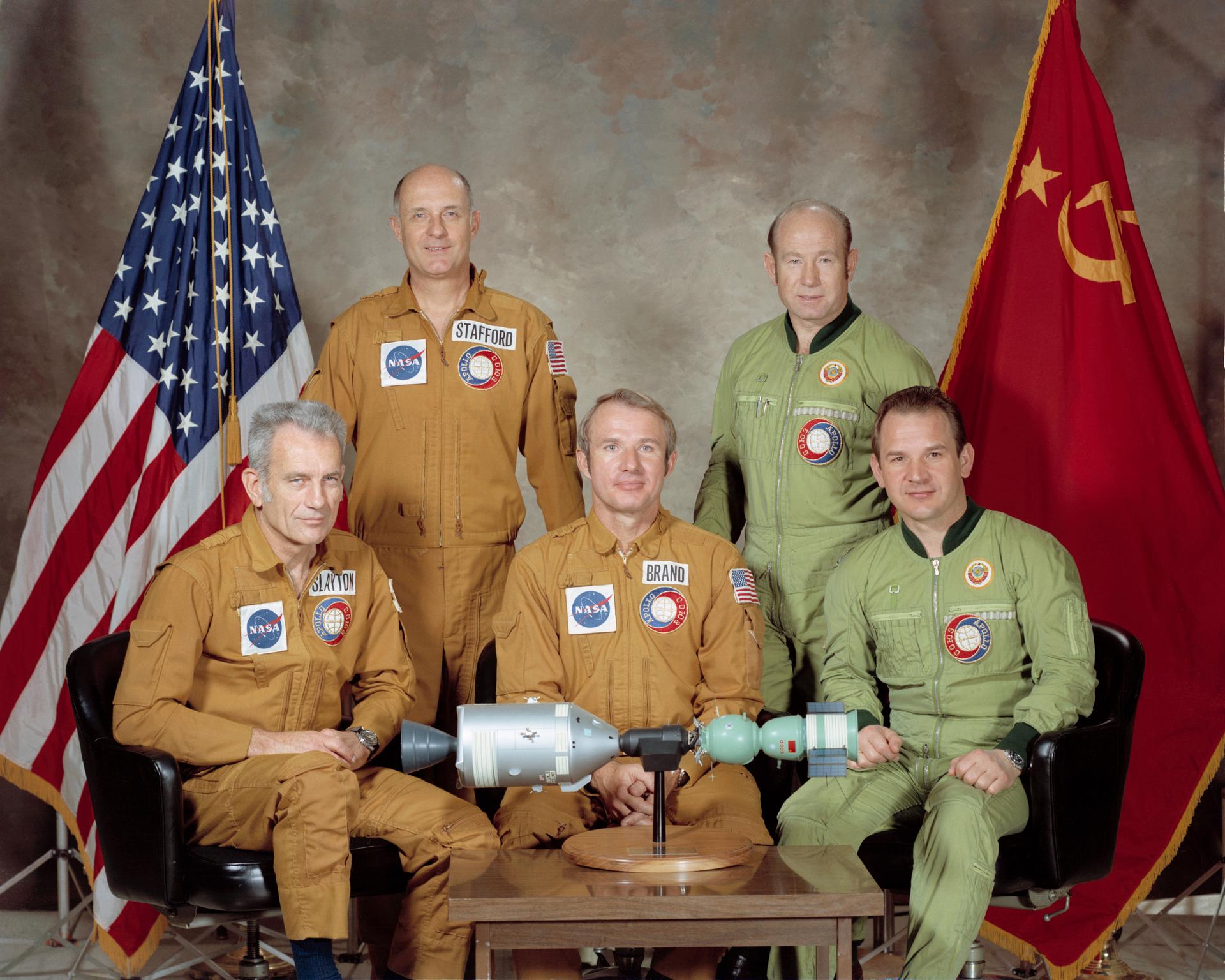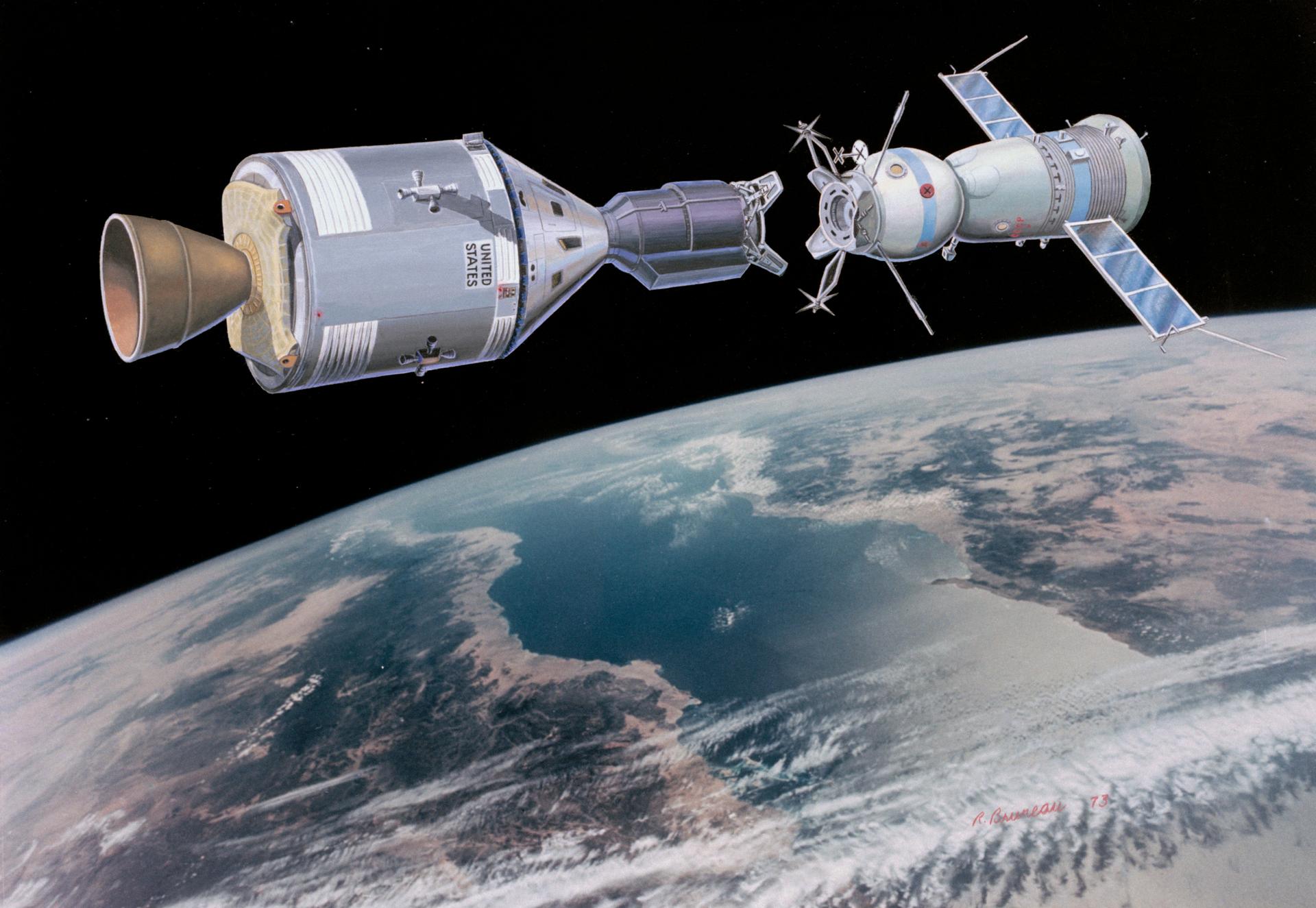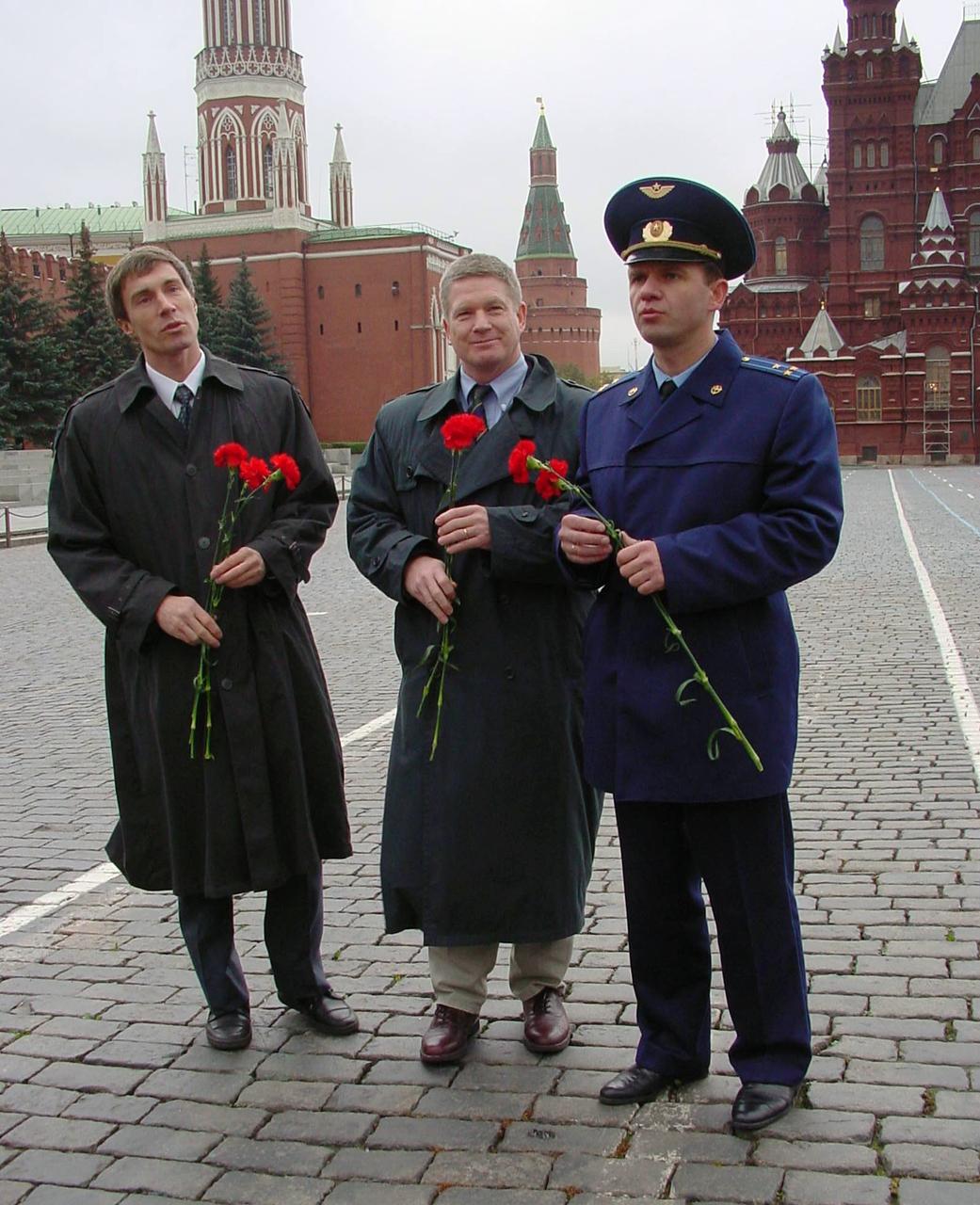The fourth man to fly in space—and the second to orbit the Earth—was Gherman Titov, a 25-year-old pilot from western Siberia. He flew in space sixty years ago today, and his flight lasted a full day, or seventeen orbits of the Earth.
By any account, it was not a great flight. Titov spent much of the flight nauseated by spacesickness. He also tried sleeping, but he had trouble falling asleep and was annoyed by his arms as they floated in front of his face. After 24 hours in space, his spacecraft reentered the atmosphere. As the capsule was descending by parachute, he ejected to land separately under his own parachute. (Human legs are good shock-absorbers, and the Vostok landed too fast for humans. Gagarin had ejected in the same way four months earlier.)
Gus Grissom’s flight had been essentially a repeat of Alan Shepard’s, but Titov’s flight was much longer than Gagarin’s—seventeen times longer, to be exact. This reflected the Soviets’ ambitious approach to spaceflight in 1961 and for the next several years. The Soviets did not want to use their limited resources repeating their previous accomplishments. Instead, every subsequent mission had to be a major step beyond the previous mission. Thus, the next Soviet flight after Titov’s was a dual launch: in August 1962, Vostoks 3 and 4 were inserted into similar orbits 24 hours apart, the first time that more than one man had been in space at the same time. The following June, the Soviets made another dual flight, but with a twist: the pilot of Vostok 6 was Valentina Tereshkova, the first and only woman to fly into space until the 1980s. The pilot of Vostok 5, Valery Bykovsky, set a duration record of five days.
As the Soviet flights became more ambitious, they also became riskier. In October 1964, the Voskhod 1 mission flew three cosmonauts into space in a heavily modified Vostok capsule. In order to fit three men into a capsule that was originally designed for only one, the Voskhod had no ejection seats and the crew did not wear spacesuits, both of which had been important safety features on the Vostok. Had there been a problem with the booster early in launch, the three men on Voskhod 1 would have been doomed with no chance of escape. Similarly, they couldn’t eject out of the capsule at the end of the mission. Instead, the parachute system needed to have retrorockets to slow the capsule down to a safe speed just before impact with the ground. Lacking the resources to build a test article for the Voskhod parachute system, the OKB-1 design bureau took Gherman Titov’s Vostok 2 capsule out of a museum and refitted it with the new system. In a drop test at the Feodosiya testing range in Crimea, the new parachute system failed and the Vostok 2 capsule slammed into the earth at high speed and broke into pieces.
The engineers at OKB-1 diagnosed the problem with the parachute system, and the Voskhod 1 flight went ahead successfully but with considerable risk. The following March, the second Voskhod flight was another risky but ultimately successful mission. Alexei Leonov climbed out of an airlock and became the first person in history to walk in space, just two-and-a-half months before an American, Ed White, did the same thing on the Gemini 4 mission.
By this point, the Soviet piloted space program had begun to run out of momentum, and the Americans took the lead with ten increasingly complex and successful Gemini missions. It was not until two years after Voskhod 2 that the next Soviet space mission flew on an all-new spacecraft, the Soyuz. Although Soyuz 1 was probably less risky than either of the Voskhod flights had been—because the Soyuz had a launch abort rocket—the mission ended in tragedy when the descent module’s parachutes failed to deploy before landing. The spacecraft’s one crewman, Vladimir Komarov, died on impact.

President Kennedy visits with American astronaut John Glenn (L) and Russian cosmonaut Gherman Titov (R) at the White House in 1962. At 25, Titov was the youngest person ever to orbit the Earth. In 1998, John Glenn would become the oldest spacefarer, flying on the Space Shuttle at age 77. (Source: JFK Library)
It has been sixty years since the first men flew into space. Sixty years is a long time—longer than the median age of the human species (31 years) or the median ages in Russia (39.6 years) and the United States (38.1 years). A minority of the Earth’s population was alive in 1961, and it’s worth reflecting here what that might mean to us as humans.
The pioneering spacefarers of 1961 are all gone now. They died in pairs: two later in the sixties from terrible accidents, and two around the turn of the millennium from disease or old age. Gus Grissom was the first to die; as mentioned in the previous post, he perished in the Apollo 1 fire on the launchpad on January 27, 1967. Yuri Gagarin died a year later in the crash of a MiG-15 jet. Alan Shepard died of leukemia in 1998. Gherman Titov succumbed to cardiac arrest in 2000 at the age of 65.
A lot can change in sixty years, and a lot has. Despite continued tensions between Russia and the United States in the twenty-first century, the Cold War is over, and so is the Space Race. The two leading space powers have cooperated in spaceflight for more than a quarter century. The International Space Station has been continuously crewed by both Russians and Americans since November 2001. Although the ISS agreement is set to expire in 2024 and the future of spaceflight cooperation remains in doubt, US-Russian space cooperation has continued throughout the tensions between the two countries in recent years.
If politics can change in sixty years, then so can culture. I am not equipped to evaluate how Russian culture has changed in six decades, but I can say for certain that American culture has changed immensely in the same amount of time. With immigration reform in 1965, the American population has gotten a good deal more diverse than it was in 1961. In the same time, American culture has had to become more tolerant of diversity (recent backlash against diversity notwithstanding).
This was not the case in the early sixties. As seen in both the book and film versions of The Right Stuff, Alan Shepard delighted in imitating the character José Jiménez, created by comedian Bill Dana. José Jiménez was a Latino astronaut with a thick accent and dull wits. Shepard imitated José Jiménez so much that the other astronauts started to call him by that name. When Shepard’s Mercury-Redstone lifted off on May 5, 1961, Deke Slayton radioed from launch control, “You’re on your way, José!”
In the sixties, for Anglo-Americans like Alan Shepard, the idea of a Latino flying into space was a joke in and of itself. This is, of course, no longer the case. Mexicans, Mexican-Americans, and other Hispanics and Latinos have been flying into space since the 1980s. The José Jiménez character was only funny because it was based on negative ethnic stereotypes. The José Jiménez scenes in The Right Stuff are positively cringe-worthy today. (To his credit, Bill Dana retired the character in 1970, only nine years after Shepard’s flight.)
These cultural and political changes over the past six decades highlight something that is all too easy to miss in our discussions about spaceflight: spaceflight belongs to the past as well as the future. So much of our discourse about spaceflight imagines it as futuristic—science-fiction becoming real. Vostok and Mercury were indeed futuristic in their day, but like the Cold War and Bill Dana’s José Jiménez character, they now belong to the past.





